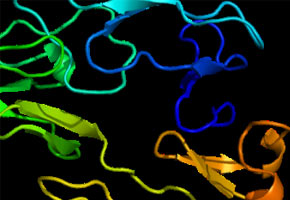

Brazilian and U.S. researchers perform study on a group of rare hereditary illnesses caused by genetic deficiencies of the innate immune system
Brazilian and U.S. researchers perform study on a group of rare hereditary illnesses caused by genetic deficiencies of the innate immune system
Brazilian and U.S. researchers perform study on a group of rare hereditary illnesses caused by genetic deficiencies of the innate immune system

Brazilian and U.S. researchers perform study on a group of rare hereditary illnesses caused by genetic deficiencies of the innate immune system
By Elton Alisson
Agência FAPESP – A new group of rare hereditary diseases began to be identified in different parts of the world over the last 14 years. They are caused by genetic deficiencies of the innate immune system and, if not diagnosed early and treated appropriately, can lead to severe health complications.
In order to study their prevalence and improve diagnosis of these new illnesses (called hereditary auto inflammatory syndromes) in Brazil, a group of researchers from different institutions around the country and the United States performed a nationwide study over the last three years. The results of the study were presented at the Annual Scientific Meeting of the American College of Rheumatology (ACR), which ended on November 9 in Chicago.
Funded by FAPESP and the Brazilian societies of Pediatrics and of Rheumatology, the project was a collaborative effort by researchers from the Universities of São Paulo (USP), Estadual de Campinas, the State of Rio de Janeiro, the Federal Universities of São Paulo, Rio de Janeiro, Goiás and Pernambuco and from the National Institute of Allergy and Infectious Diseases (NIAID) in the United States.
In Brazil, 103 patients were selected for the study including adults and children, all suspected to carry one of the five most prevalent inflammatory syndromes in the world: Familial Mediterranean Fever; cryopyrinopathies; Pediatric Granulomatous Arthritis; Hyperimmunoglobulinemia D (Mevalonate Kinase Deficiency); and Tumoral Necrosis Factor Receptor Associated Periodic Syndrome.
Among these 103 patients, the researchers identified and sequenced the genes related to the five syndromes in about a third of them.
“As these syndromes are all very similar –the symptoms are the same and other new diseases similar to them could exist—the genes of the illnesses found in about two thirds of the patients were not identified or mapped,” said Clovis Artur Almeida da Silva, USP professor and coordinator of the project to Agência FAPESP.
The objective now is to continue identifying and sequencing the patients’ genes so as to improve diagnosis of the diseases, for which new treatments are emerging. “We still don’t have the conditions to evaluate all the patients carrying these diseases, as treatment is specific for each one,” he affirmed.
Characterized by periodic fever and recurring systemic inflammatory symptoms such as arthritis, abdominal pain, spots on the skin, inflammation of the eyes and the central nervous system, among others, these illnesses are being diagnosed all over the world. They seem to mostly affect Mediterranean populations from Turkey and Armenia, Sephardic Jews (originating from Spain and Portugal) and Arabs, due to blood lines.
“Marriages between blood relatives are common in these populations. As these illnesses are hereditary and have distinct inheritances, they end up attacking more people in these geographic regions,” explained Silva. In some of these regions, cases vary from 1 in 200 to 1 in 1,000 people.
Prevalence of the diseases has still not been determined in Brazil. “We presented the initial results of the study at the Brazilian Congress of Pediatric Rheumatology in Salvador in October, and many researchers have sent us emails saying that they have patients with symptoms similar to those of the diseases. As they are divulged throughout the country, more cases will emerge,” he said.
In order to identify cases in Brazil, blood serum samples were collected in clinical cases, mostly in the Southeast and none in the North, were no carriers of the diseases were reported. Among the clinical cases studied, two children were identified that presented cutaneous inflammations such as psoriasis and spots on the skin as well as non-infectious osteomyelitis.
The researchers assumed that the children were carriers of an already-identified inflammatory syndrome. But when their genes were sent another researcher in Qatar in the United Arab Emirates for sequencing, the Brazilian group discovered a new syndrome in the Brazilian population, which they named DIRA.
The discovery will be published in one of the next issues of the American College of Rheumatology’s Arthritis & Rheumatism magazine.
Republish
The Agency FAPESP licenses news via Creative Commons (CC-BY-NC-ND) so that they can be republished free of charge and in a simple way by other digital or printed vehicles. Agência FAPESP must be credited as the source of the content being republished and the name of the reporter (if any) must be attributed. Using the HMTL button below allows compliance with these rules, detailed in Digital Republishing Policy FAPESP.





